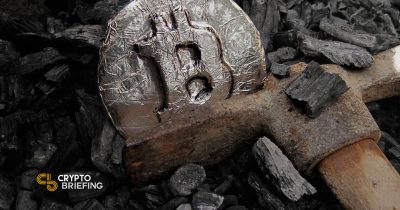The Miner's Dilemma: Premined Coins Making Headway

Share this article
Whenever cryptocurrencies come up in debate, mining is inevitably one of the biggest, and least-informed, points. From Brad Sherman to Paul Krugman, certain commentators clearly feel that since the two leading cryptocurrencies require work they must be inherently bad. (Panning for gold would have made them crazy in 1849.)
Even if the arguments against proof-of-work mining seem exaggerated, there’s still plenty of irony in crypto’s relationship with the coal and oil industries. Ethereum’s co-founder, Vitalik Buterin, has publicly advocated shifting away from the proof-of-work protocol, and it seems probable that the second-largest cryptocurrency may soon eliminate mining altogether.
And Ethereum is not alone; the entire crypto market seems to be leaning away from mining. Two years ago, there were only 191 non-mined currencies in the top 500 by market capitalization; by December 2017 they had reached 343, with seventy in the top hundred. At present, there are 409 non-mined cryptocurrencies in the top 500, over 80% of the total. Seventy-five are in the top hundred.
The Advantages Of Mining
The biggest benefit to proof-of-work is security: it guarantees that there will always be block producers as long as the currency is worth anything. By incentivizing thousands of nodes to verify transactions and compute blocks, a mined ledger pays for thousands of thorough line audits every day.
From a less utilitarian angle, mining also ensures a less centralized coin distribution. There is no ‘founders’ monopoly’; anyone with a computer could theoretically have made more bitcoins than Satoshi.
….and its Drawbacks.
The last point is a double-edged sword, since it also limits the founders’ ability to build their project and incentivize adoption. In premined currencies like XRP and Nano, the development teams get a modest promotion budget of the entire coin supply. Although this leads to asymmetric distributions (like single employees becoming billionaires) the developers are, at least, well-motivated.
Moreover, since mining still requires investment in resources, the security of the network becomes dependent on the price of electricity. Given that a 51% attack can be launched on most smaller mining networks, at a price far cheaper than the expected gains, newer cryptocurrencies put themselves at risk if they use common hashing algorithms.
Are Premines Centralizing Wealth?
As we’ve argued before, premines are the cryptocurrency equivalent of a gold tycoon trying to convince everyone to switch to the gold standard. No matter how good the new currency is, the fact that the promoter owns the entire supply is not a good selling point.
That doesn’t seem to bother investors in the short term, as premined currencies have little difficulty spending and advertising their way into the higher market caps. However, the trouble may come when they get to the ‘adoption’ phase–and buyers wonder why there’s only one person selling coins.
The author has investments in Bitcoin, Ethereum and other Cryptocurrencies.
